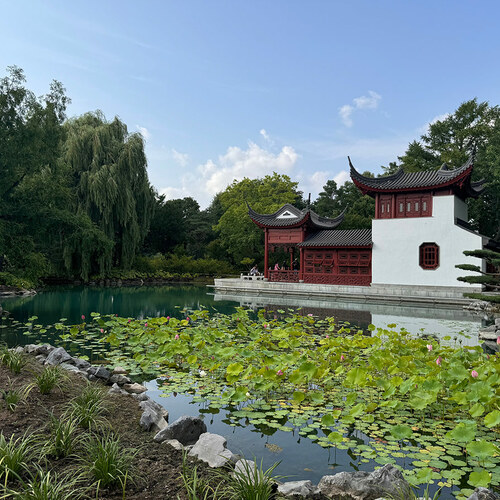
Happy Friday GPODers!
We’re ending the week on a very tranquil, peaceful note with another visit to Montreal Botanical Garden courtesy of Cherry Ong. In case you missed it, yesterday we explored the impressive penjing collection in the Springtime Courtyard (Le Cour du Printemps), and today we’re exploring the aptly named Dream Lake Garden (Le Jardin du Lac de reve).
This is an authentic Chinese garden designed to resemble the private garden of a mandarin, an Imperial court official, in Ming-era (14th to 17th centuries) southern China. The 2.5 hectare space was designed by Chinese architect Le Weizhong and is one of the largest classical gardens outside of China.
The Garden is the fruit of friendship between Montreal and Shanghai. It was built entirely in China, then dismantled and shipped by sea to Montreal. Here it was reassembled in 1990 by a team of more than fifty craftsmen brought specially from China. The Dream Lake Garden opened on June 20, 1991.
The Garden’s layout, the plant species and the architecture of the different buildings all reflect age-old traditions. It is a peaceful haven for you to enjoy in the heart of the city, just as people would have done in China in days gone by.
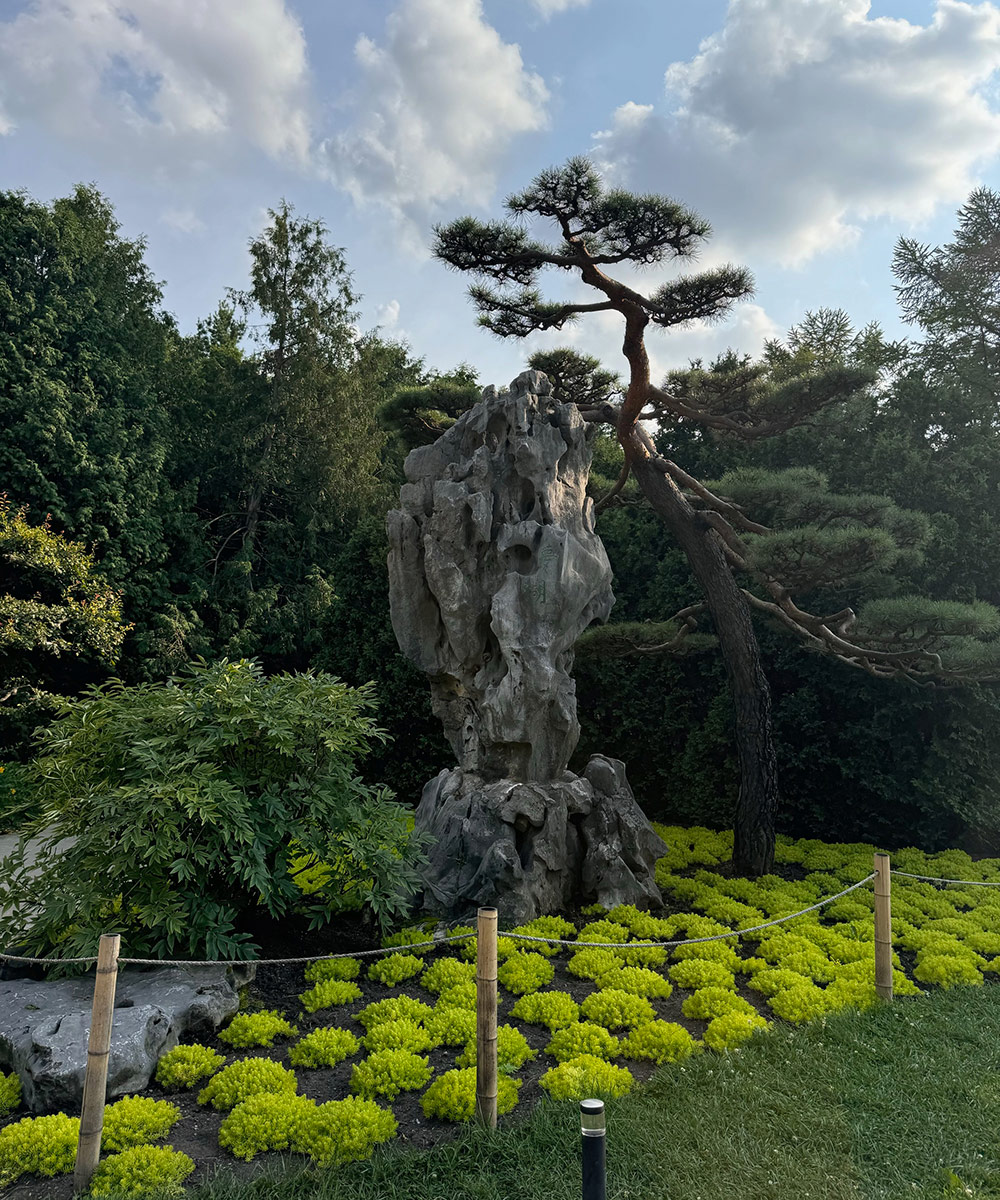 Not dissimilar to the penjing we saw yesterday, Chinese gardens were traditionally designed to mimic and evoke the larger natural world. This is why both rocks/stones and greenery are two prominent features. Large rocks and boulders like the incredible structure above, are meant to represent towering mountain peaks, while the bright yellow-green sedum and other foliage plants that surround capture the feeling of ancient forests. To learn more about the importance of rocks in traditional Chinese garden design, check out this fascinating article from The Metropolitan Museum of Art: Chinese Gardens and Collectors’ Rocks.
Not dissimilar to the penjing we saw yesterday, Chinese gardens were traditionally designed to mimic and evoke the larger natural world. This is why both rocks/stones and greenery are two prominent features. Large rocks and boulders like the incredible structure above, are meant to represent towering mountain peaks, while the bright yellow-green sedum and other foliage plants that surround capture the feeling of ancient forests. To learn more about the importance of rocks in traditional Chinese garden design, check out this fascinating article from The Metropolitan Museum of Art: Chinese Gardens and Collectors’ Rocks.
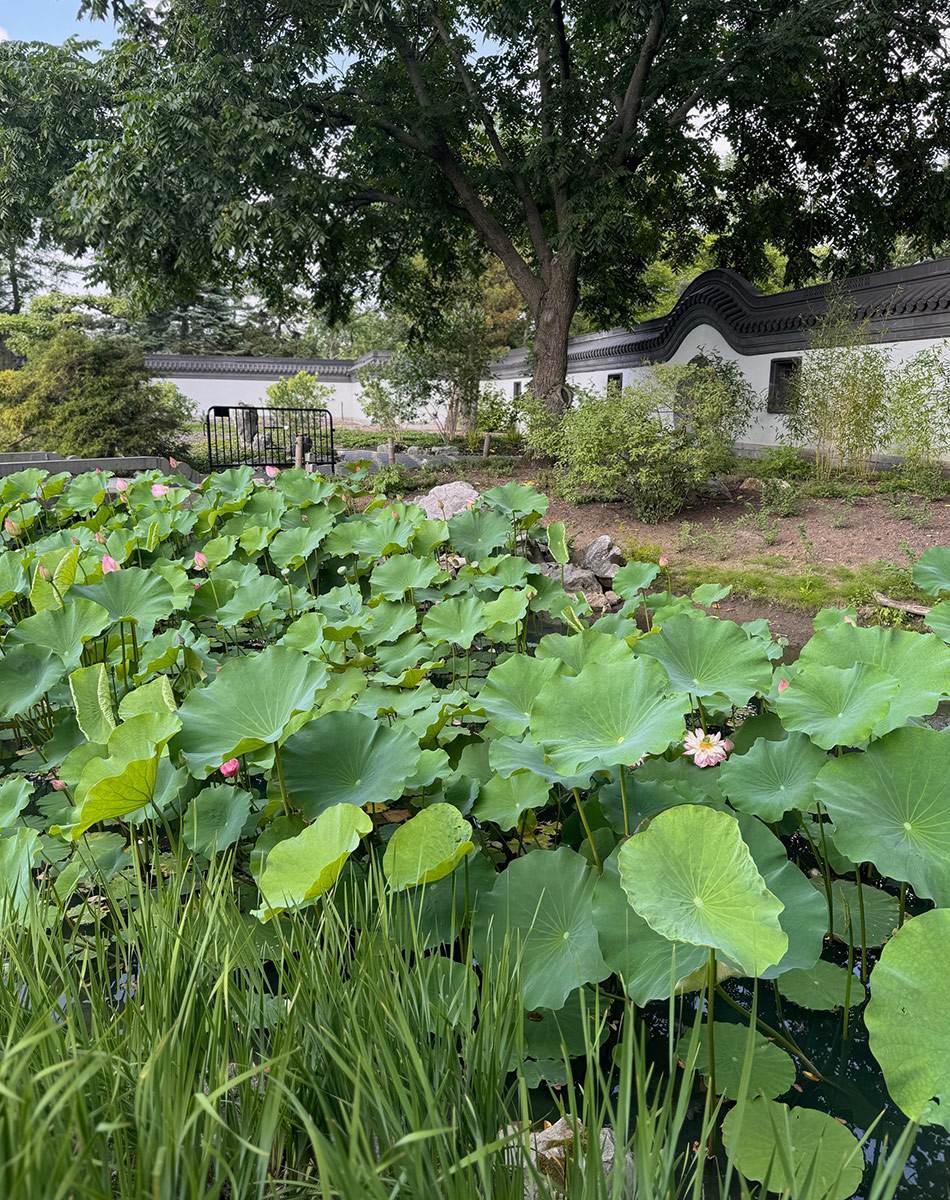 While the lush greenery and striking rock arrangements transport you to a wild forest, the real stars of this part of the garden are the incredible lotus (Nelumbo nucifera, Zones 4–10) plants.
While the lush greenery and striking rock arrangements transport you to a wild forest, the real stars of this part of the garden are the incredible lotus (Nelumbo nucifera, Zones 4–10) plants.
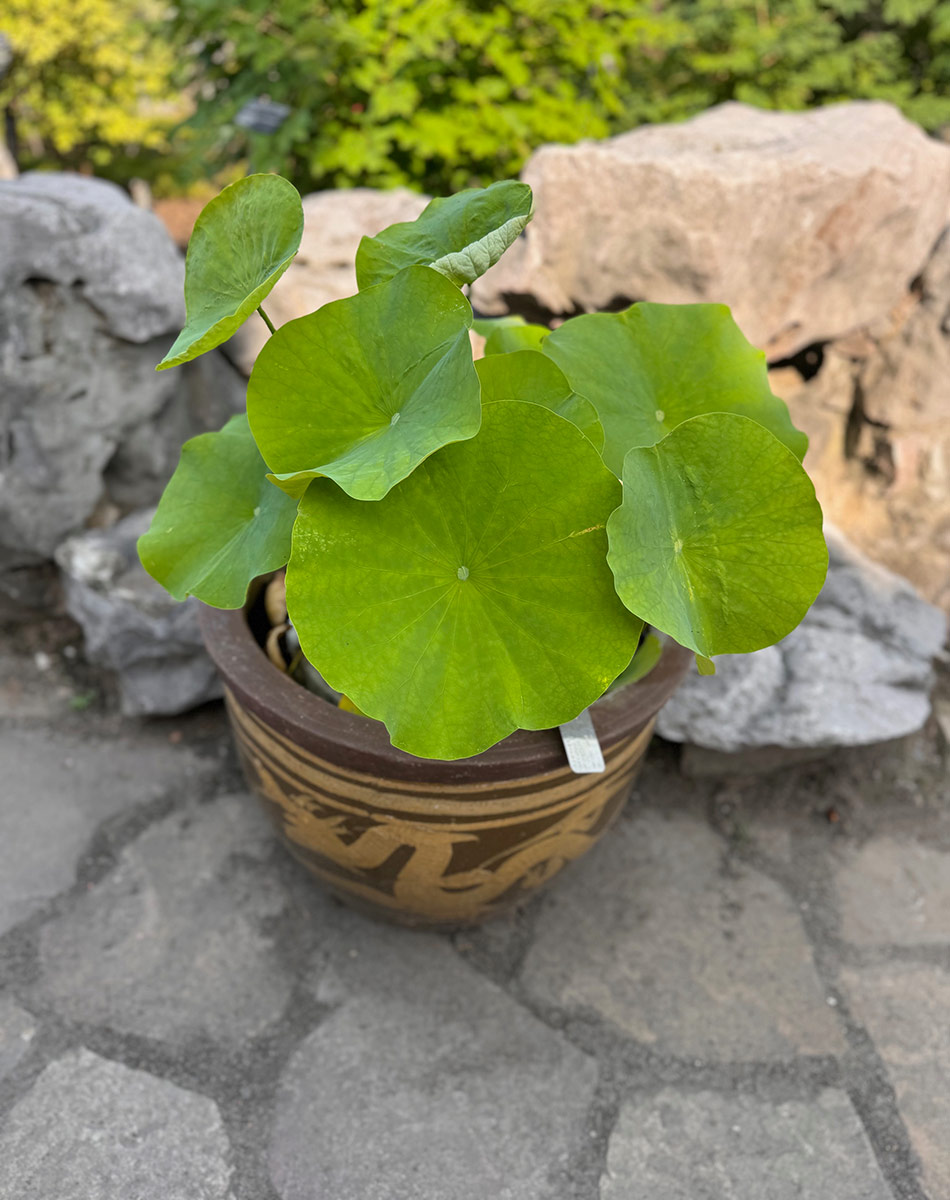 Although you probably envision lotus growing out to large masses in lakes and ponds, they are also great plants to grow in containers.
Although you probably envision lotus growing out to large masses in lakes and ponds, they are also great plants to grow in containers.
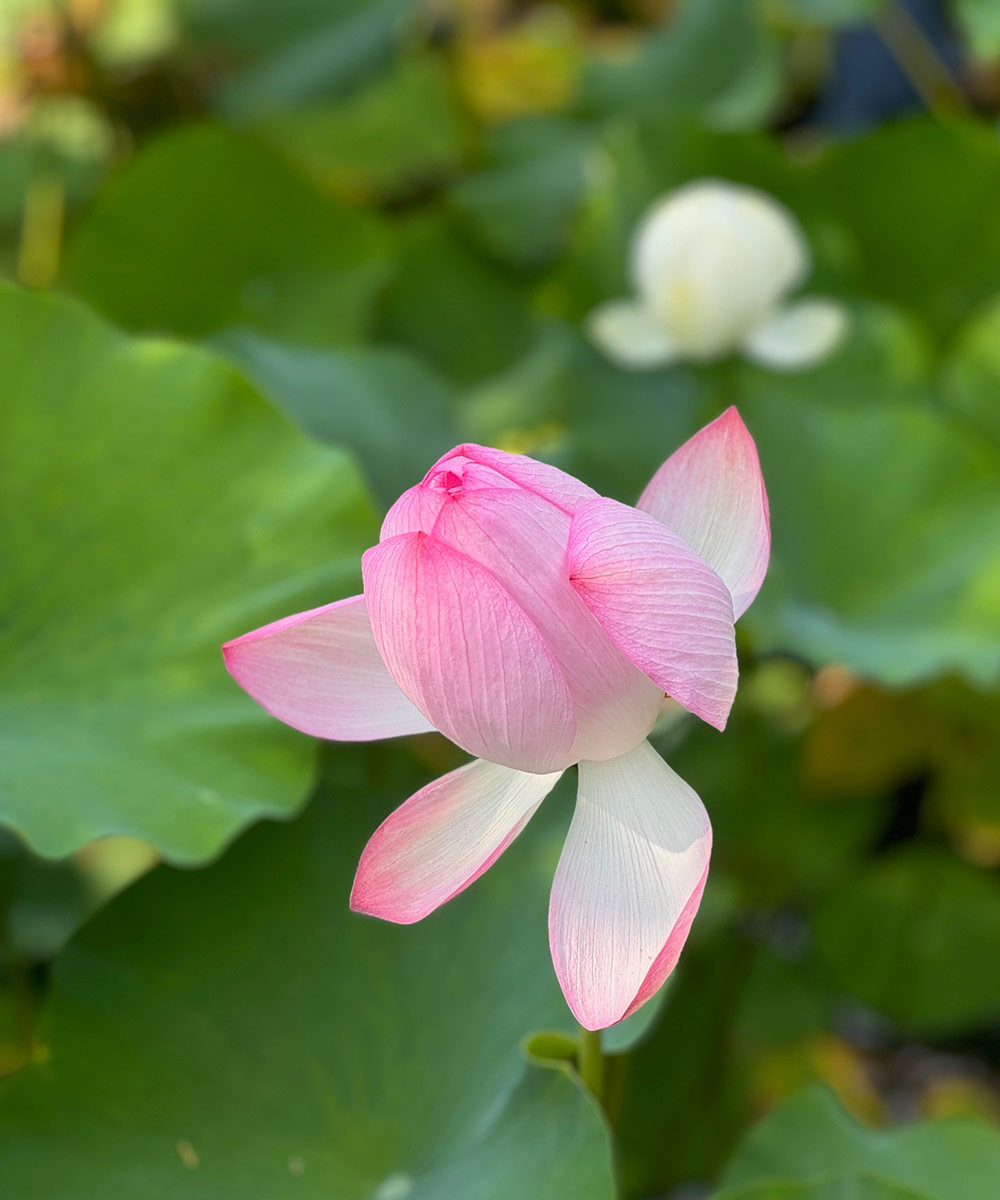 Sacred Lotus (Lotus d’Orient) – The lotus is the most admired of all aquatic plants, with its elegant bearing, graceful flowers and rich traditional heritage. For Buddhists, the lotus is a symbol of purity, for its flower rises immaculate from its muddy bed. In China, it symbolizes the Confucian model of the “superior man” and is also one of the noble flowers. There are two species of lotus: The sacred lotus (above), Nelumbo nucifera, also known as the East Indian lotus, Oriental lotus or lily of the Nile, is native to southern Asia and can grow at altitudes of up to 1,600 meters. And…
Sacred Lotus (Lotus d’Orient) – The lotus is the most admired of all aquatic plants, with its elegant bearing, graceful flowers and rich traditional heritage. For Buddhists, the lotus is a symbol of purity, for its flower rises immaculate from its muddy bed. In China, it symbolizes the Confucian model of the “superior man” and is also one of the noble flowers. There are two species of lotus: The sacred lotus (above), Nelumbo nucifera, also known as the East Indian lotus, Oriental lotus or lily of the Nile, is native to southern Asia and can grow at altitudes of up to 1,600 meters. And…
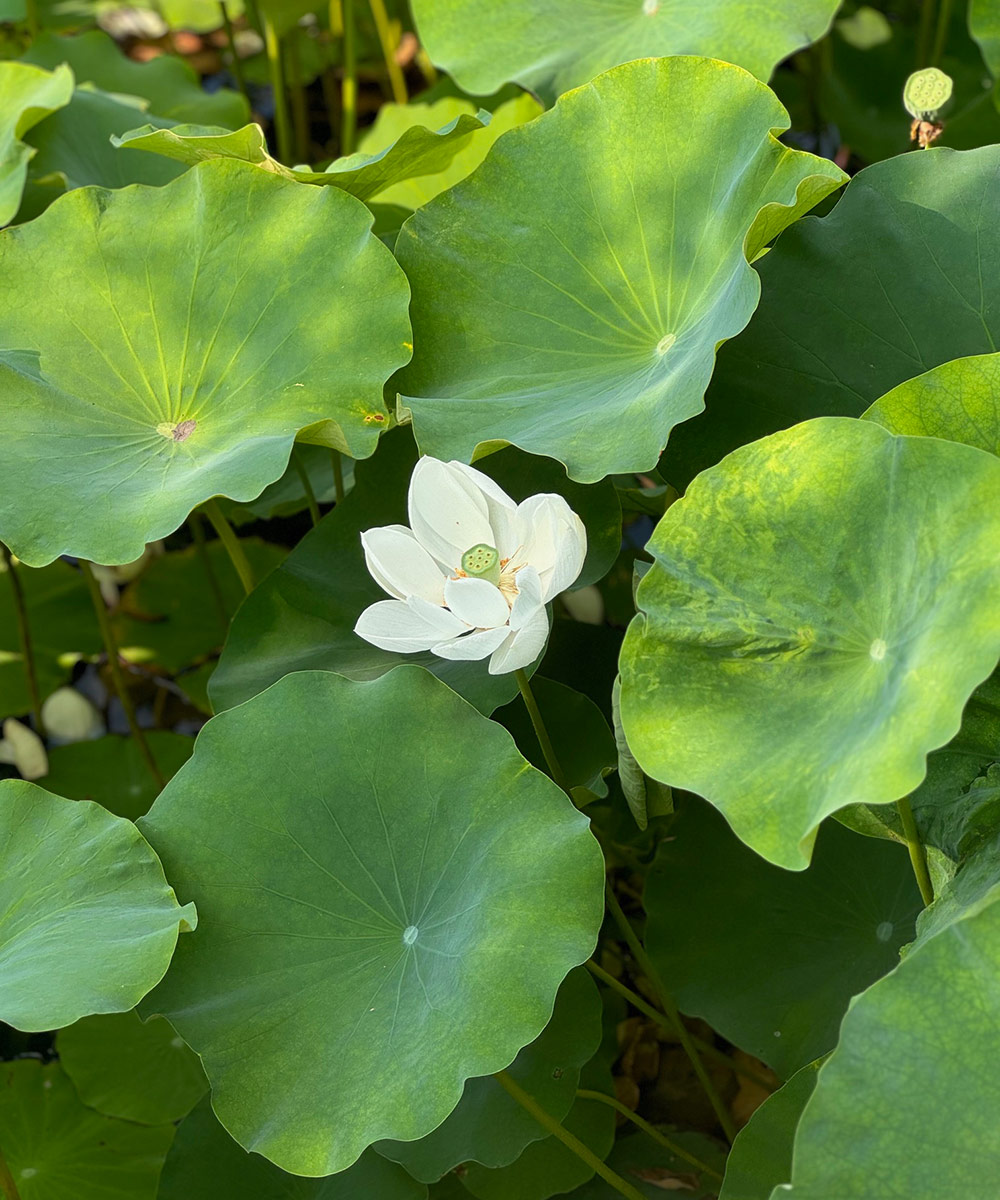 The American lotus, Nelumbo lutea, is native to a region stretching from southeastern North America to the northern parts of South America. Smaller than the sacred lotus, it bears scented, pale yellow flowers.
The American lotus, Nelumbo lutea, is native to a region stretching from southeastern North America to the northern parts of South America. Smaller than the sacred lotus, it bears scented, pale yellow flowers.
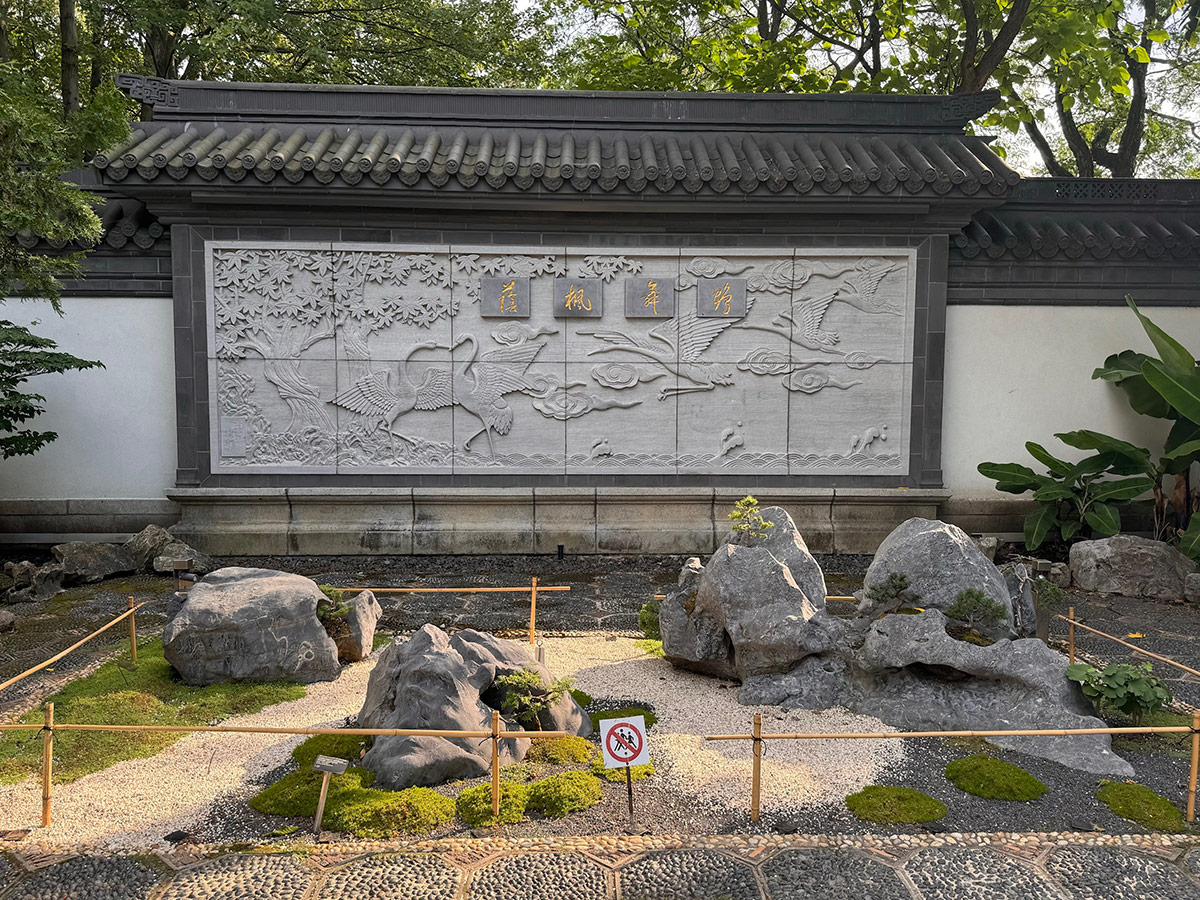 Though zen gardens are most often associated with Japan, several other countries in Asia have created their own interpretations of these dry, rock gardens. To match the more wild, natural aesthetic of traditional Chinese garden design, this small zen garden is more reminiscent of a natural landscape than the meticulous and minimalist Japanese style.
Though zen gardens are most often associated with Japan, several other countries in Asia have created their own interpretations of these dry, rock gardens. To match the more wild, natural aesthetic of traditional Chinese garden design, this small zen garden is more reminiscent of a natural landscape than the meticulous and minimalist Japanese style.
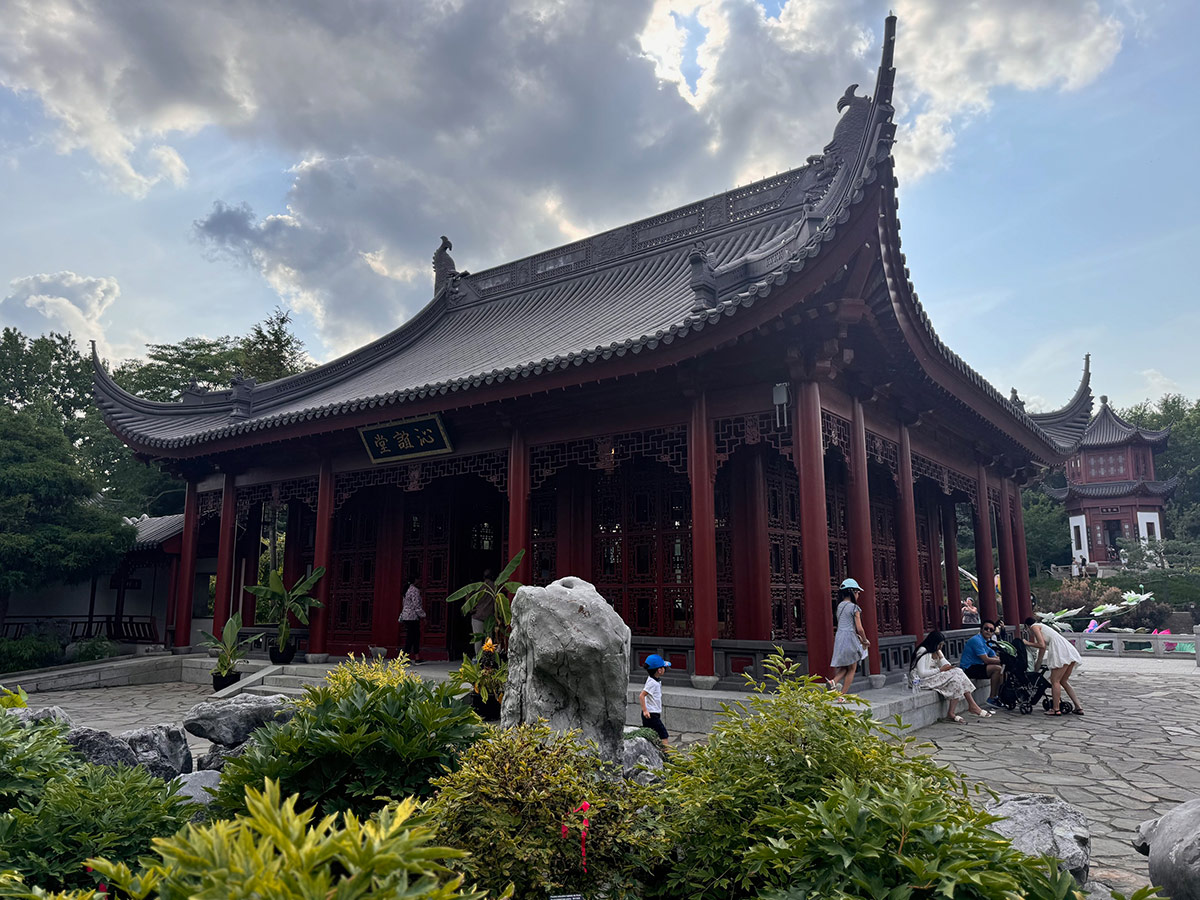 The Friendship Hall is a welcoming space in the center of the garden.
The Friendship Hall is a welcoming space in the center of the garden.
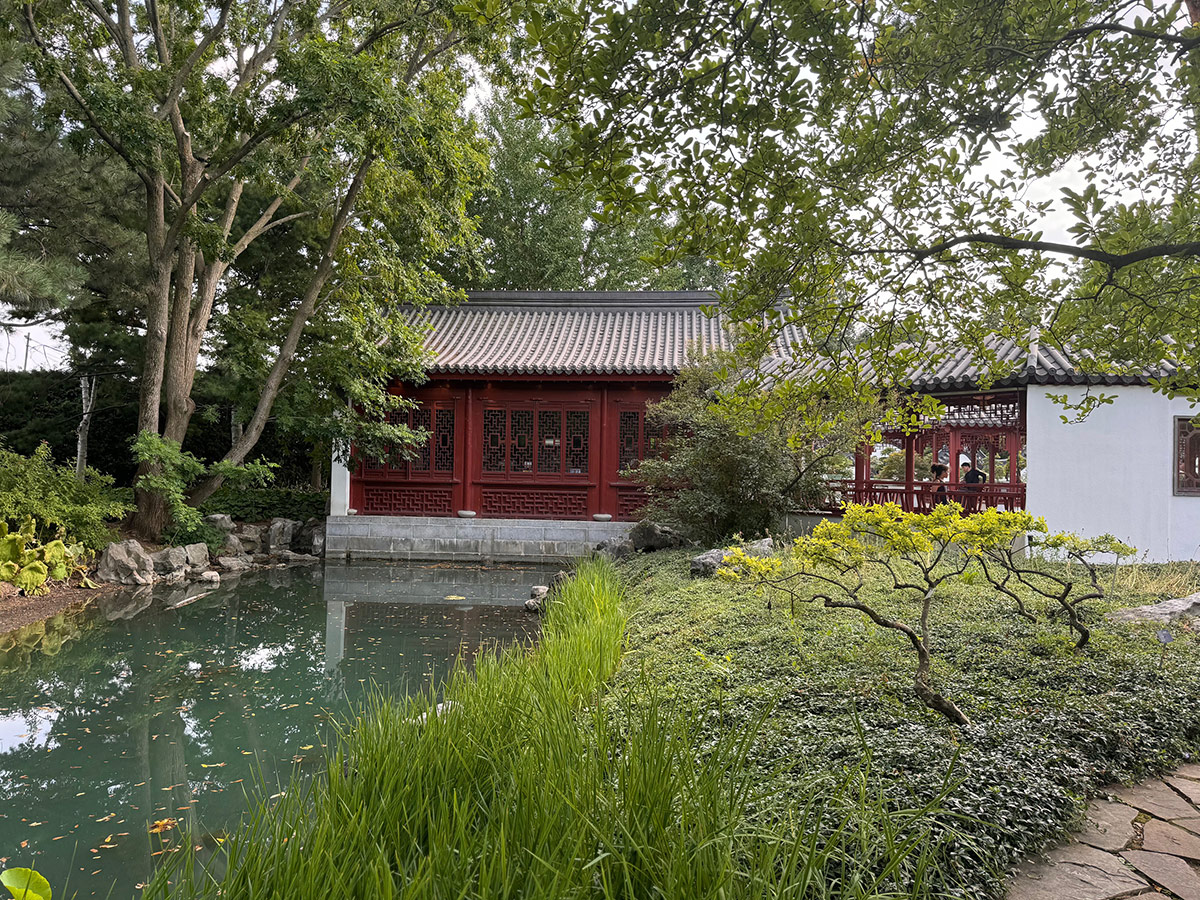 The Springtime Courtyard, which houses the amazing penjing specimens.
The Springtime Courtyard, which houses the amazing penjing specimens.
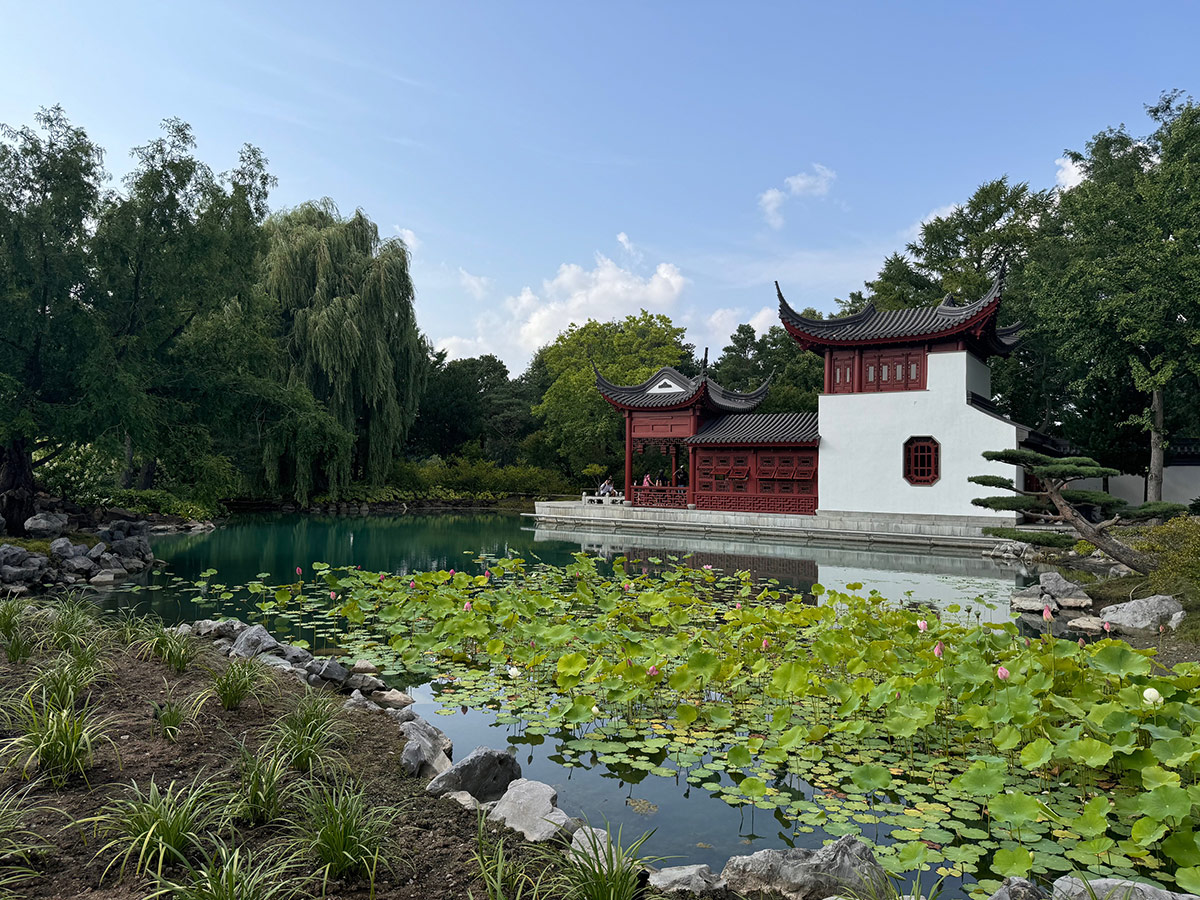 The Pavilion of Infinite Pleasantness – Little did I know that Chinese gardens combine two of my loves: plants and literature. Buildings in and around a garden are traditionally adorned with poetic couplets and names that reference literature and reflect on the owner’s values and taste. At Montreal Botanic Garden the names of all of the structures and spaces have reflected a mission to encourage relaxation, enjoyment, and happiness in the garden.
The Pavilion of Infinite Pleasantness – Little did I know that Chinese gardens combine two of my loves: plants and literature. Buildings in and around a garden are traditionally adorned with poetic couplets and names that reference literature and reflect on the owner’s values and taste. At Montreal Botanic Garden the names of all of the structures and spaces have reflected a mission to encourage relaxation, enjoyment, and happiness in the garden.
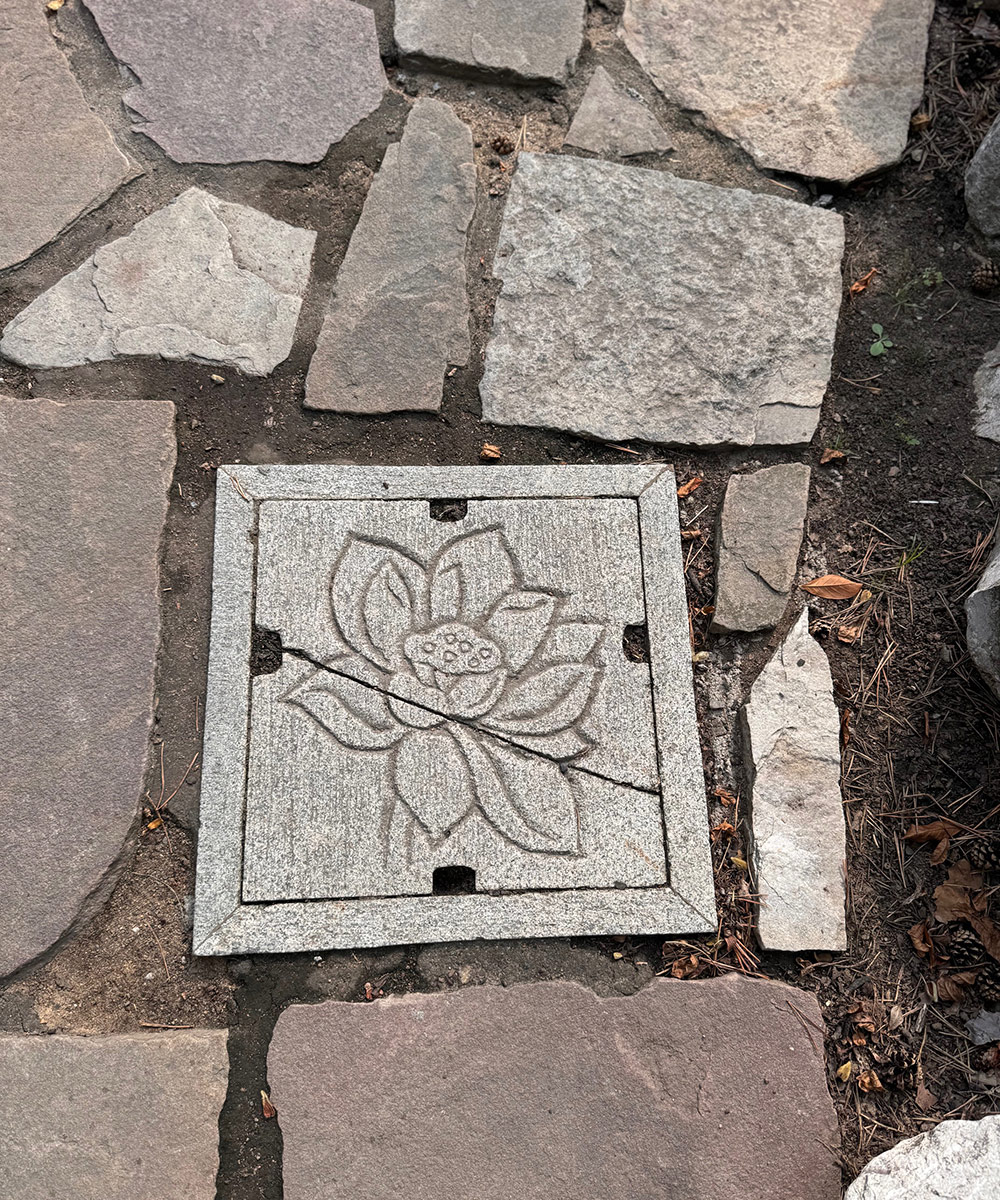 And they’re not being hyperbolic when they describe this place as “Infinite Pleasantness,” with joyful little details large and small to admire and enjoy. Cherry has a keen eye for all the details.
And they’re not being hyperbolic when they describe this place as “Infinite Pleasantness,” with joyful little details large and small to admire and enjoy. Cherry has a keen eye for all the details.
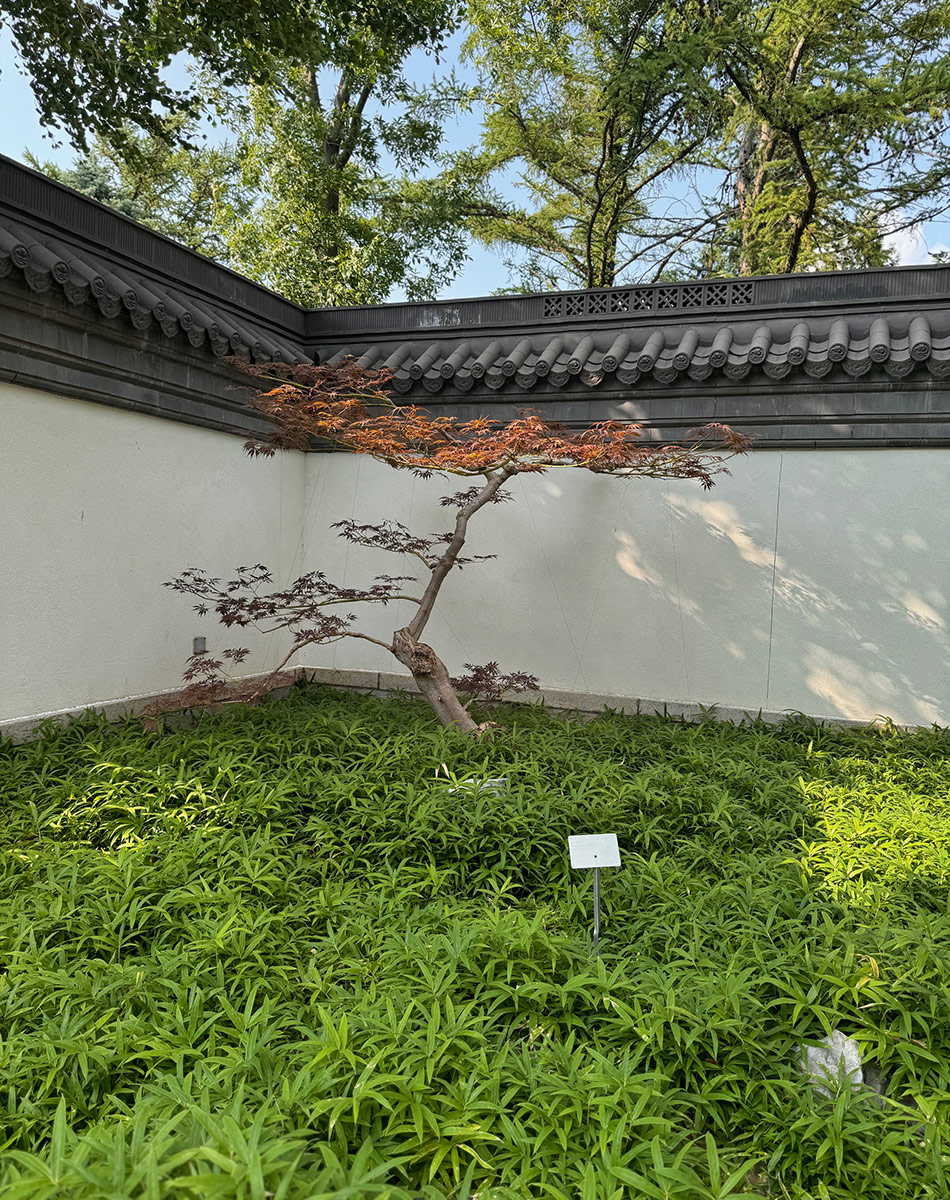 The Entrance Courtyard – with lots of Japanese stiltgrass (Microstegium vimineum) and a small Japanese maple that mimics the penjing inside.
The Entrance Courtyard – with lots of Japanese stiltgrass (Microstegium vimineum) and a small Japanese maple that mimics the penjing inside.
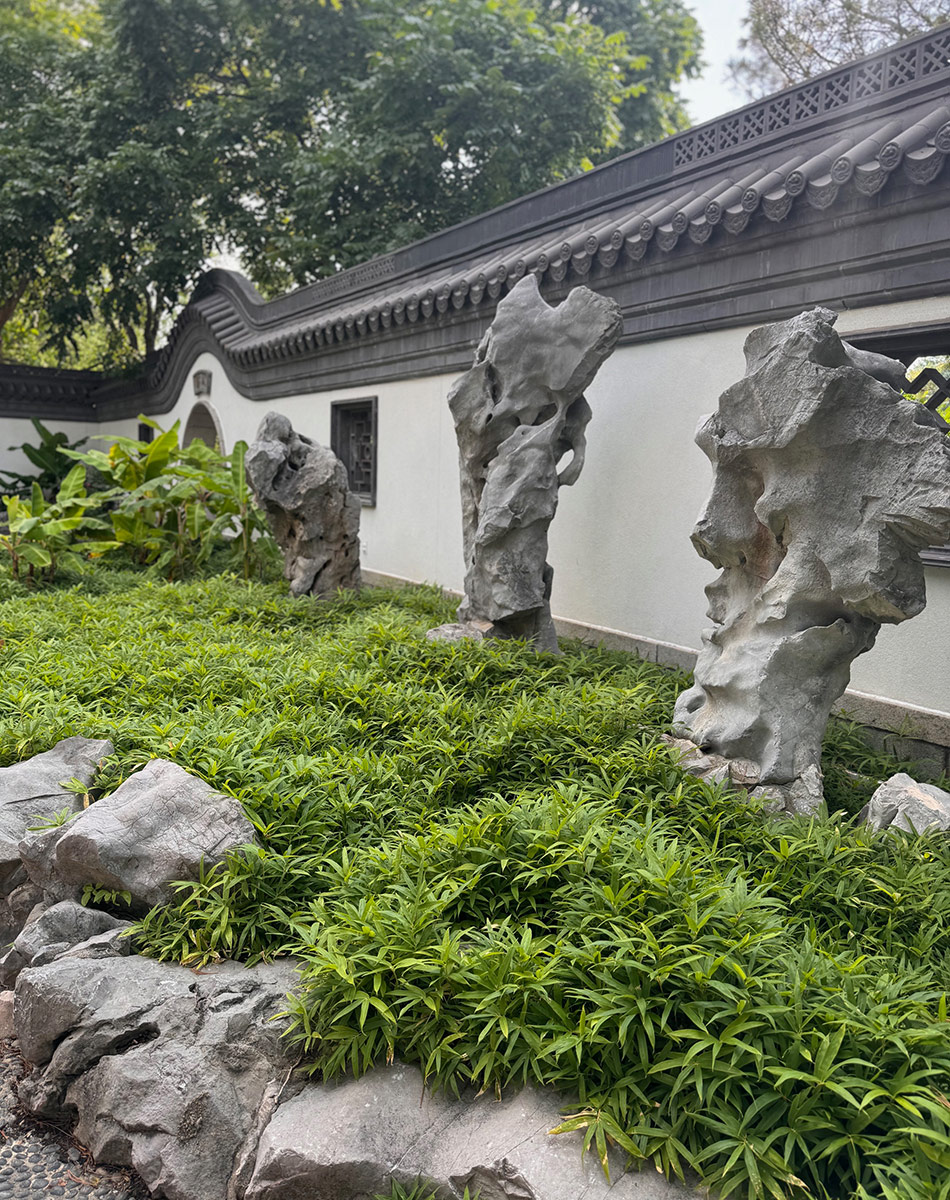 And one last look at the Entrance Courtyard before we say goodbye to this stunning garden.
And one last look at the Entrance Courtyard before we say goodbye to this stunning garden.
Thank you so much for sharing your visit to Montreal Botanical Garden with us, Cherry! I think I learned just as much as I admired these gardens.
Did you visit any gardens this summer? A big botanical garden like Cherry, or a small private garden tour? If you have photos, I would love to see them. Follow the directions below to submit photos, or send me a DM on Instagram: @agirlherdogandtheroad. Have a lovely weekend, everyone!
Have a garden you’d like to share?
Have photos to share? We’d love to see your garden, a particular collection of plants you love, or a wonderful garden you had the chance to visit!
To submit, send 5-10 photos to [email protected] along with some information about the plants in the pictures and where you took the photos. We’d love to hear where you are located, how long you’ve been gardening, successes you are proud of, failures you learned from, hopes for the future, favorite plants, or funny stories from your garden.
Have a mobile phone? Tag your photos on Facebook, Instagram or Twitter with #FineGardening!
Do you receive the GPOD by email yet? Sign up here.
Fine Gardening Recommended Products

XLUX Soil Moisture Meter
– Large and clear dial, including ten scales, plug and read
– Simply insert the moisture meter into soil and you’ll get the test result instantly
– Single probe, less hurts to the roots, doesn’t dig up too much soil after test
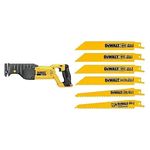
DeWalt Variable-Speed Cordless Reciprocating Saw with 6-Piece Saw Blade Set
You can fit a variety of blades to this saw to cut fallen branches or prune larger limbs from trees in a pinch. It’s fast, tough, easy to use, and extremely versatile.
– 18.31 x 6.13 x 4 inches
– 1-1/8-inch stroke length
– Variable speed trigger with 0-3000 spm
– DW4856 Metal/Woodcutting Reciprocating Saw Blade Set, 6-Piece

RAINPOINT Sprinkler Timer with Brass Swivel
– Pure brass water inlet and metal thread can withstand up to 116psi.
– Built-in metal filter gaskets can prevent sediment and other larger particles
– Through the Sprinkler Timer program, you can set the start time, watering duration, and watering frequency

Morvat Heavy Duty Brass Y-Valve
– Instantly create two tap outlets with this ultra-durable Y hose splitter. The dual-valve design features built-in shut-off valves.
– Fitted with US Standard NH 3/4″ threads for use with most water source fittings
– Screw the 2 way splitter adapter by hand or wrench with the updated hexagonal top connection. The 360° rotatable swivel connection attaches to any water source.

Dramm Revolution Adjustable 9-Pattern Metal Hose Nozzle
– 15 x 10 x 7 inches
– Ergonomic insulated grip
– Maximum pressure of 90 PSI
– Fully adjustable spray pattern
– No trigger lock








